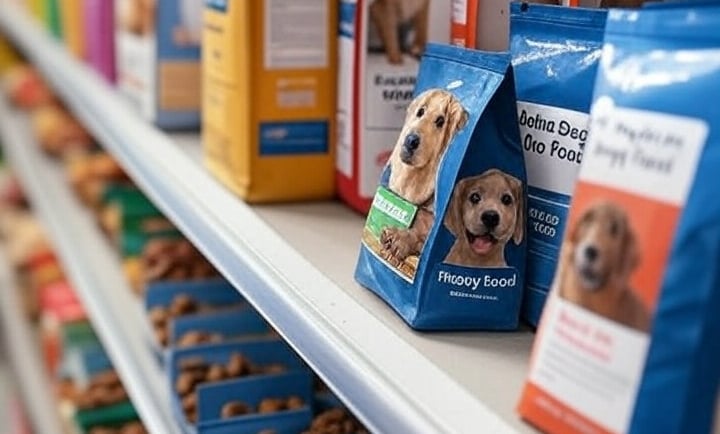How to Choose the Best Dog Food for Your Pet
Navigating dog food choices can feel overwhelming with countless options on the market. From puppy food to senior dog food, choosing the right diet ensures your dog thrives. Whether you’re considering dog food brands like Blue Buffalo or exploring grain-free dog food for allergies, understanding your pet’s needs is key. This guide breaks down how to select the best dog food for your furry friend, with tips on reading labels and tailoring nutrition to life stages. Keep your dog healthy and happy with informed dog food choices in 2025!
Khloe A.
6/24/20251 min read


Understanding Dog Food Choices
Dog food comes in various forms:
Dry Kibble: Affordable, long shelf life, good for dental health.
Wet Food: High moisture, great for picky eaters or hydration.
Raw Diets: Mimic natural diets but require careful handling.
Homemade: Customizable but needs vet approval for balance.
Each type suits different needs, budgets, and preferences.
Top Dog Food Brands in 2025
Trusted dog food brands include:
Blue Buffalo: High-protein, natural ingredients for all life stages.
Hill’s Science Diet: Vet-recommended for specific health needs.
Orijen: Grain-free, biologically appropriate for active dogs.
Compare ingredients and reviews to find the best fit.
Puppy Food vs. Adult vs. Senior Dog Food
Nutritional needs vary by life stage:
Puppy Food: High calories and calcium for growth (e.g., Royal Canin Puppy).
Adult Dog Food: Balanced for maintenance (e.g., Purina Pro Plan).
Senior Dog Food: Lower calories, joint support (e.g., Wellness Core Senior).
Consult your vet to match food to your dog’s age and activity level.
Benefits of Grain-Free Dog Food
Grain-free dog food suits dogs with allergies or sensitivities:
Allergy Relief: Avoids wheat, corn, or soy triggers.
Digestive Health: Easier on sensitive stomachs.
Energy Boost: High-protein formulas for active dogs.
Brands like Taste of the Wild offer grain-free options, but ensure they meet AAFCO standards.
Reading Dog Food Labels
Check for:
AAFCO Statement: Ensures nutritional adequacy.
Ingredients: Look for whole proteins (e.g., chicken, not “meat by-products”).
Additives: Avoid artificial colors or preservatives.
A 2024 study found 60% of pet owners misread labels, leading to poor dog food choices. Be thorough!
Consulting Your Vet for Personalized Advice
Vets can recommend diets based on:
Breed-specific needs (e.g., large breeds need joint support).
Health conditions (e.g., diabetes, obesity).
Allergies or sensitivities.
Schedule a checkup to tailor your dog’s diet.
Conclusion
Making smart dog food choices keeps your pet healthy and vibrant. Explore top dog food brands, match food to life stages, and consider grain-free dog food if needed. Read labels carefully and consult your vet for personalized advice. Download our dog food comparison chart to find the perfect diet for your pup!
© 2025. All rights reserved.
PO BOX 319382
New Braunfels, TX 78131